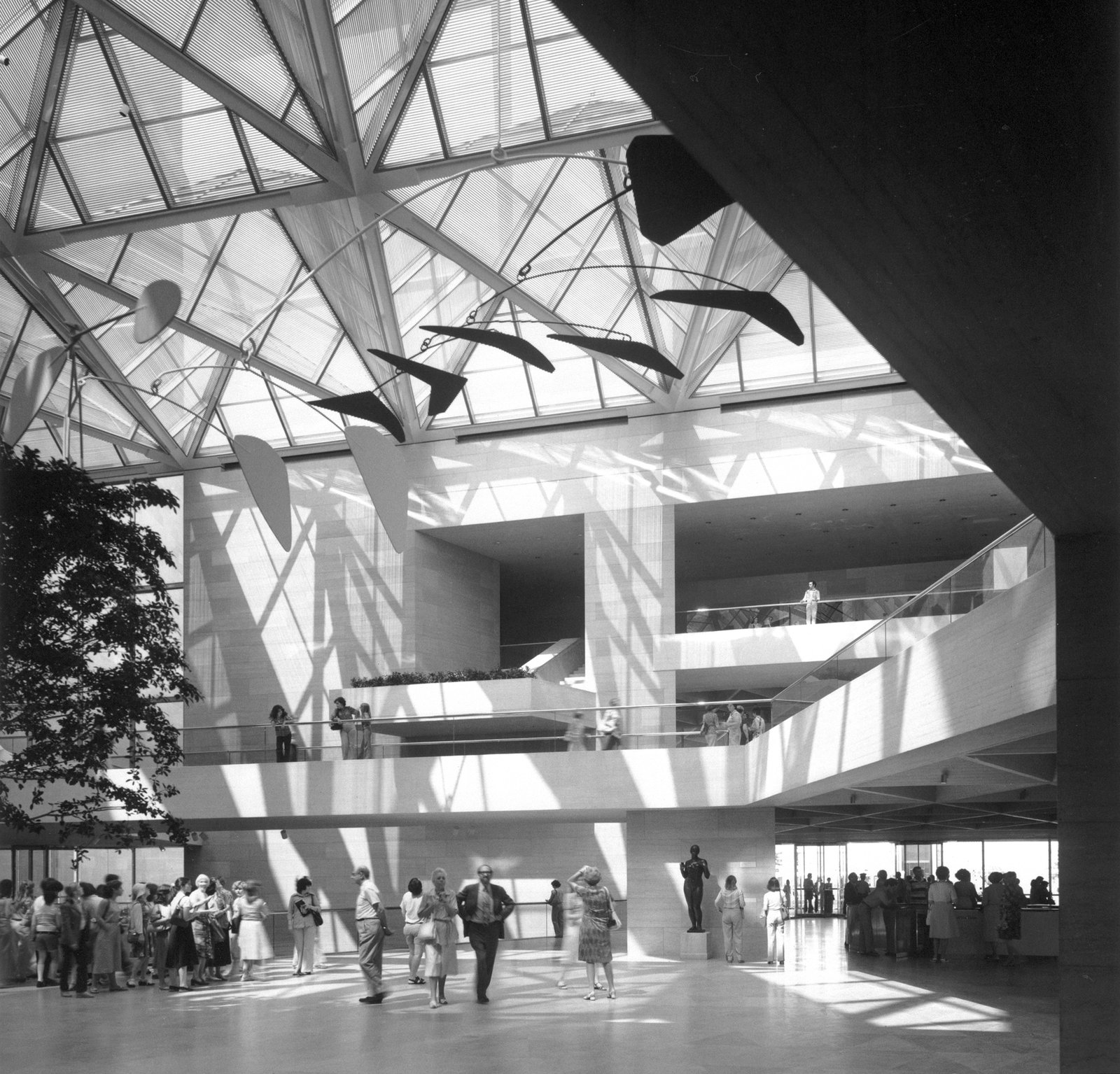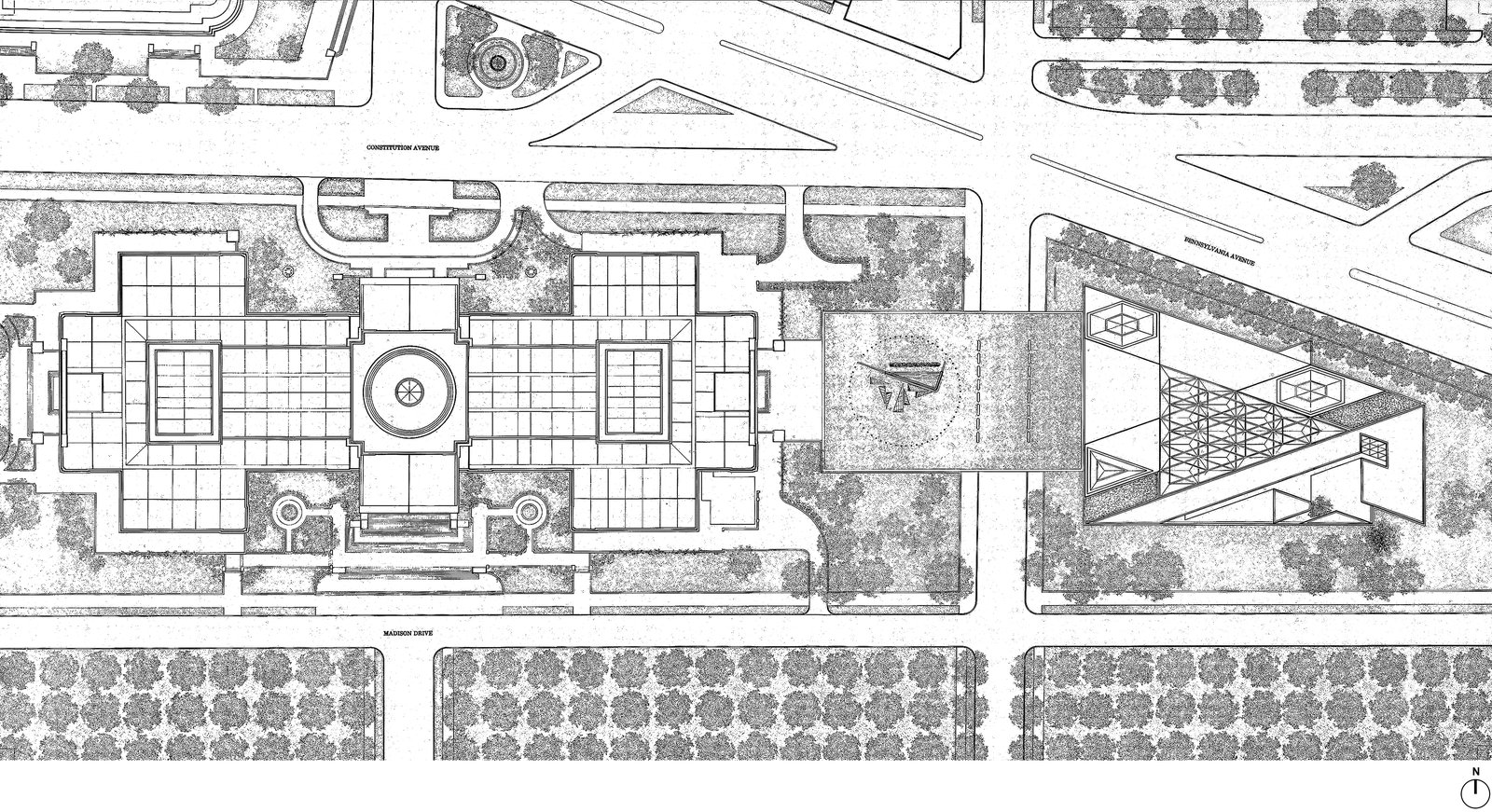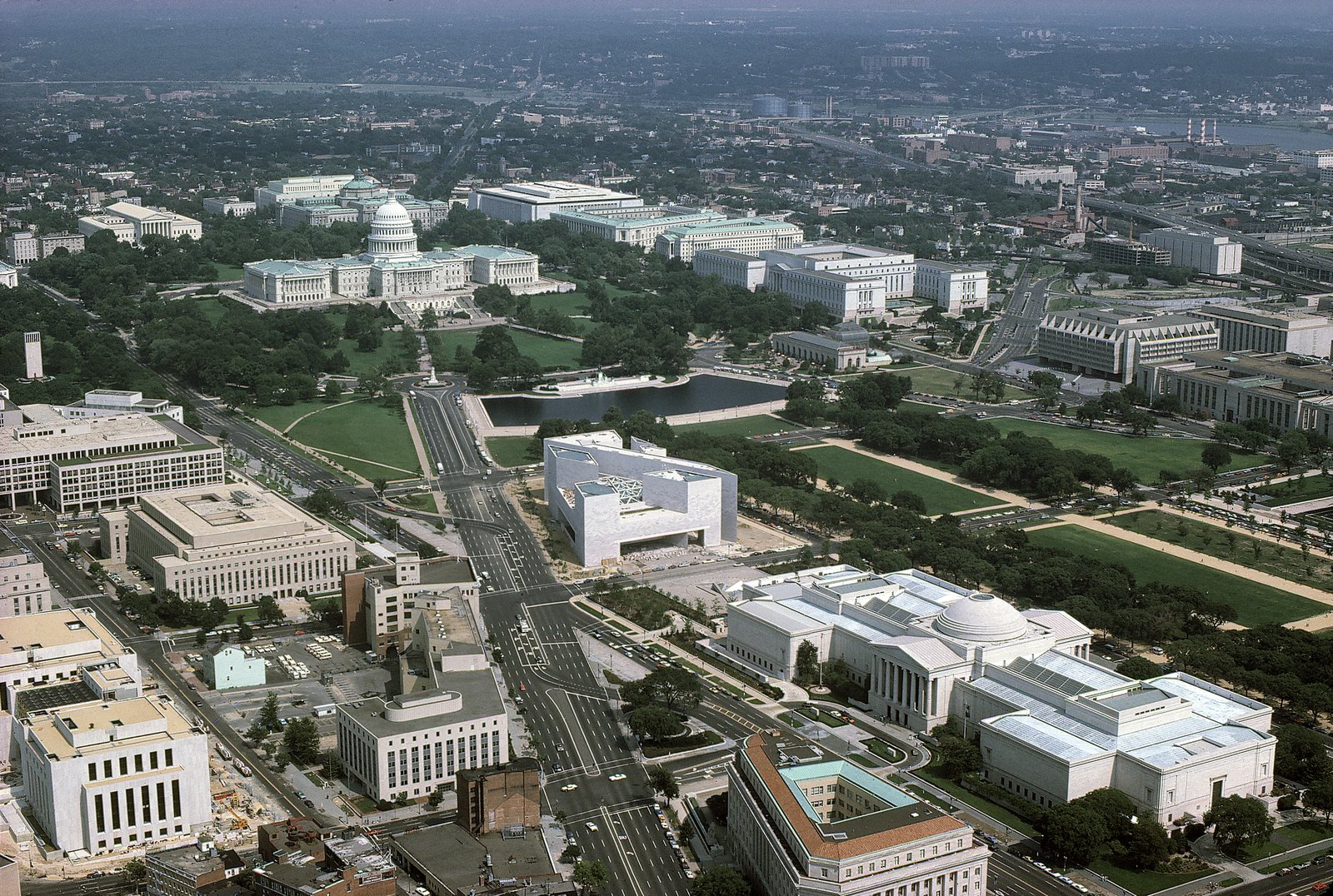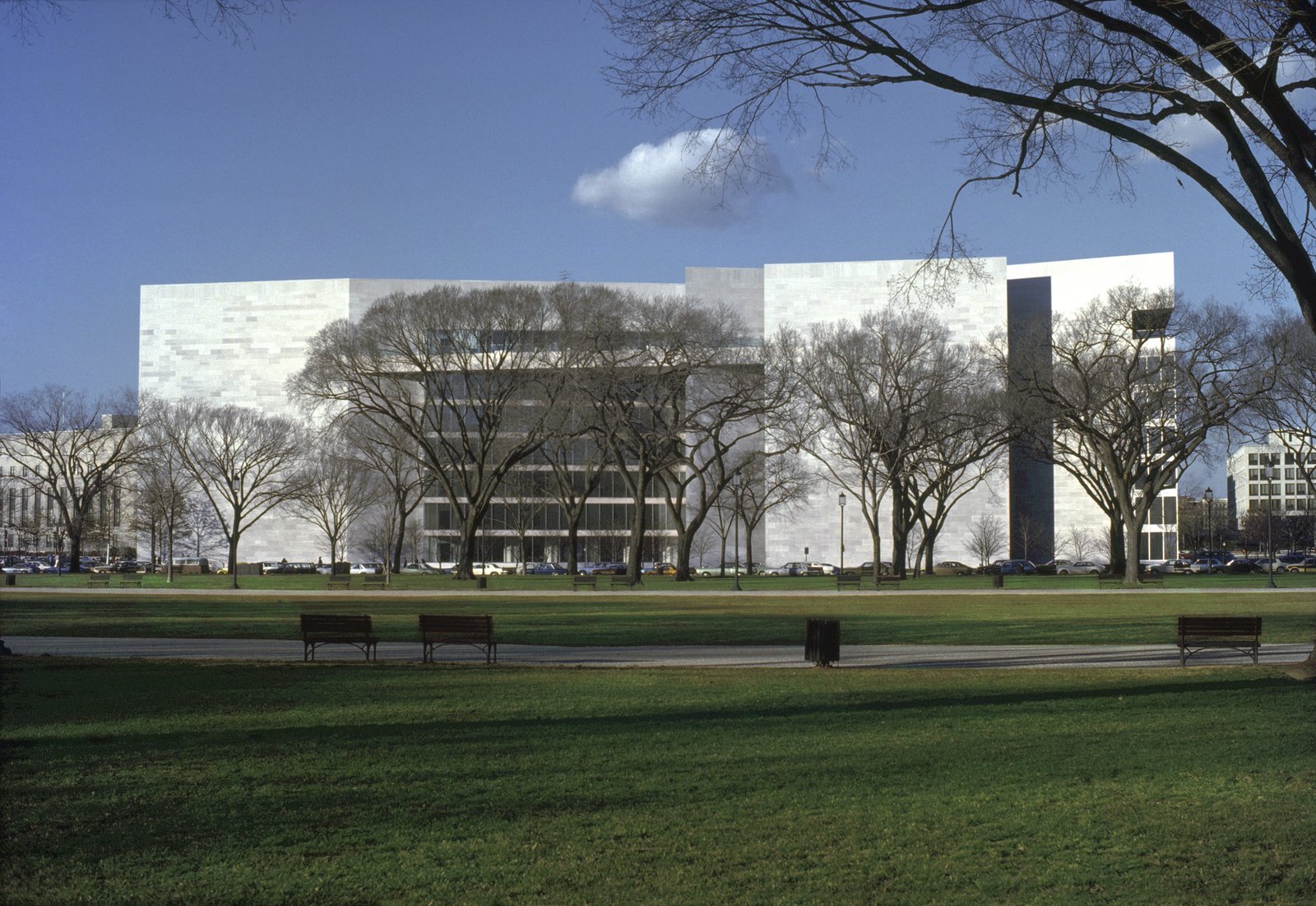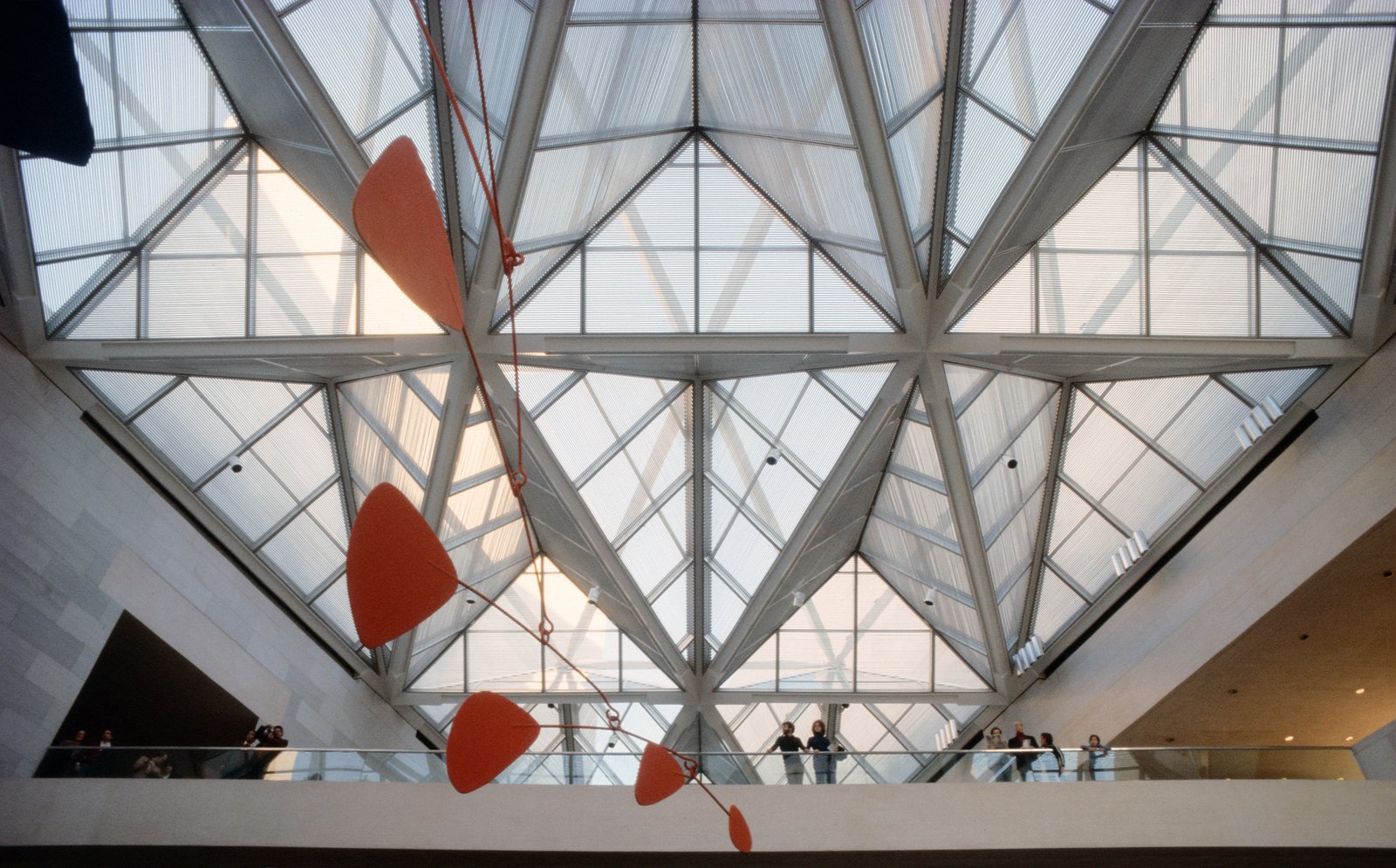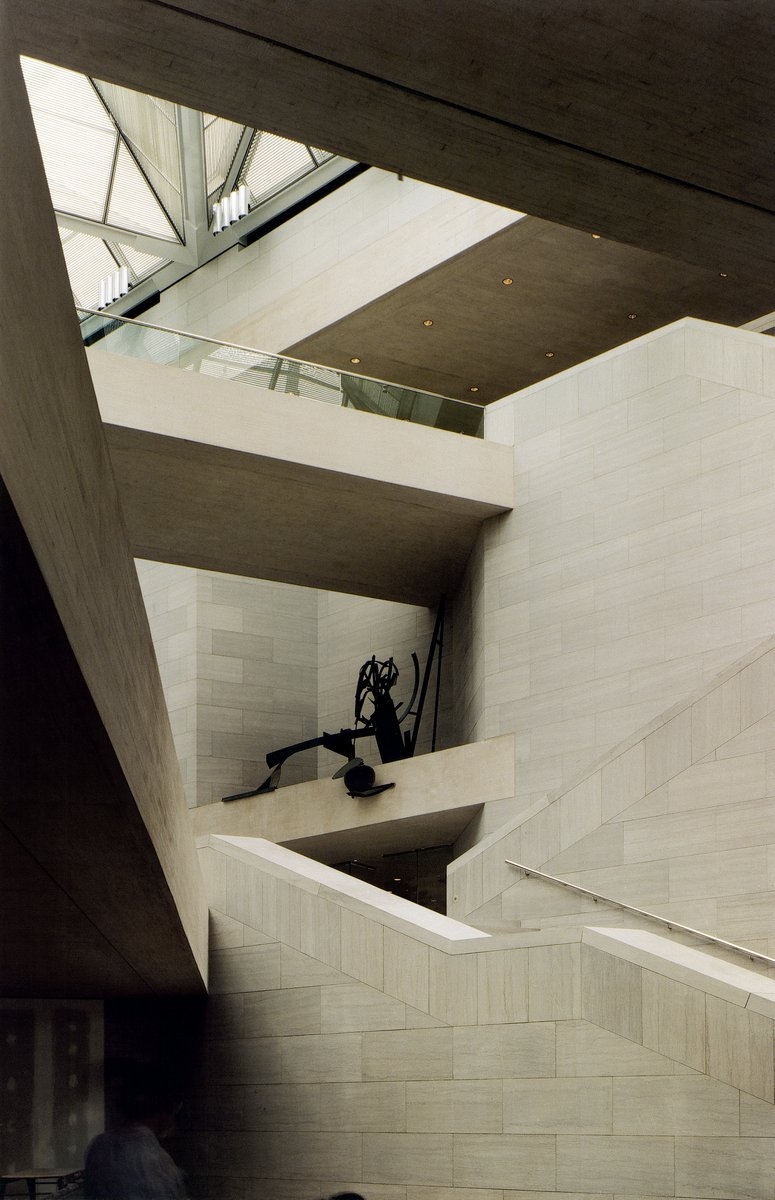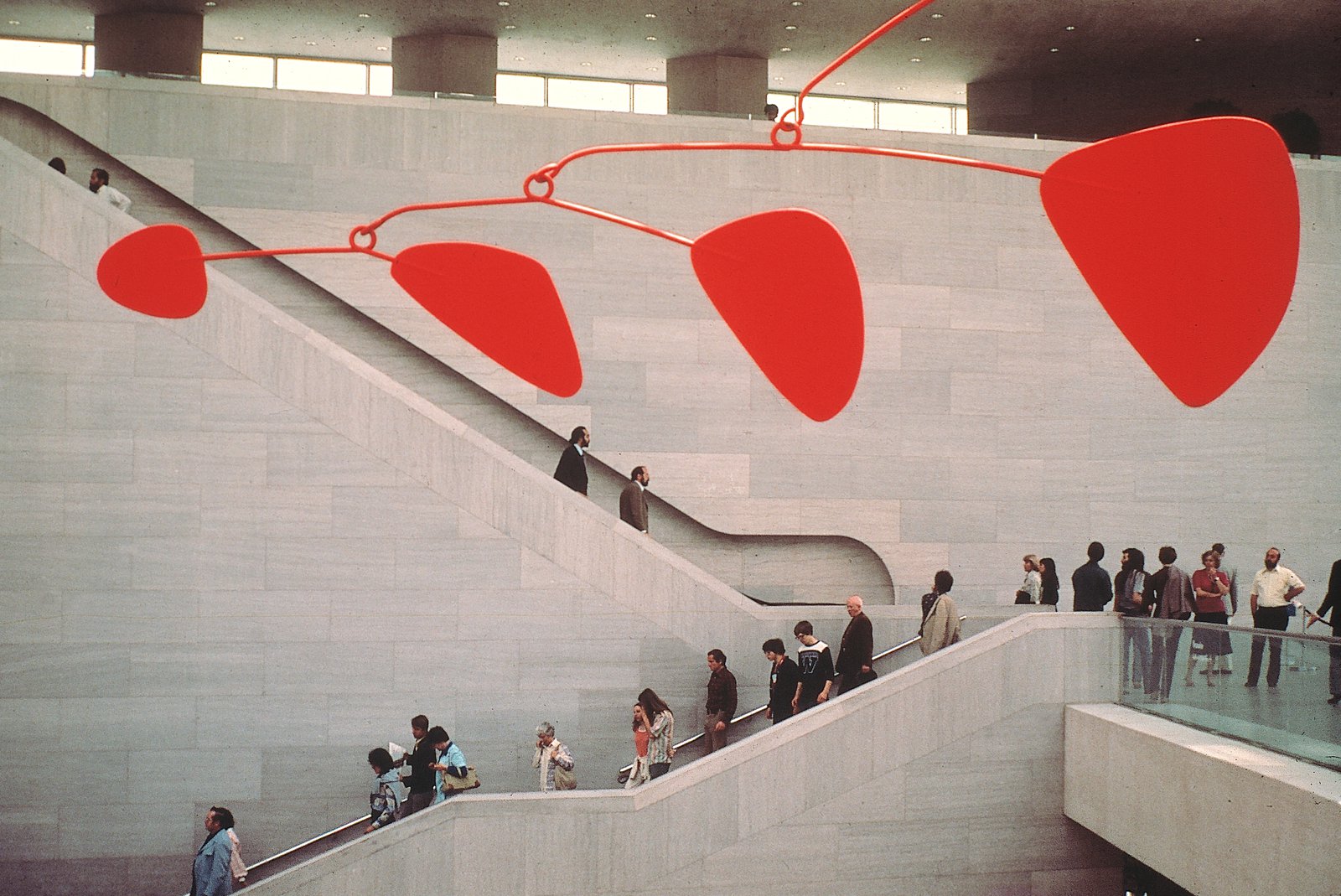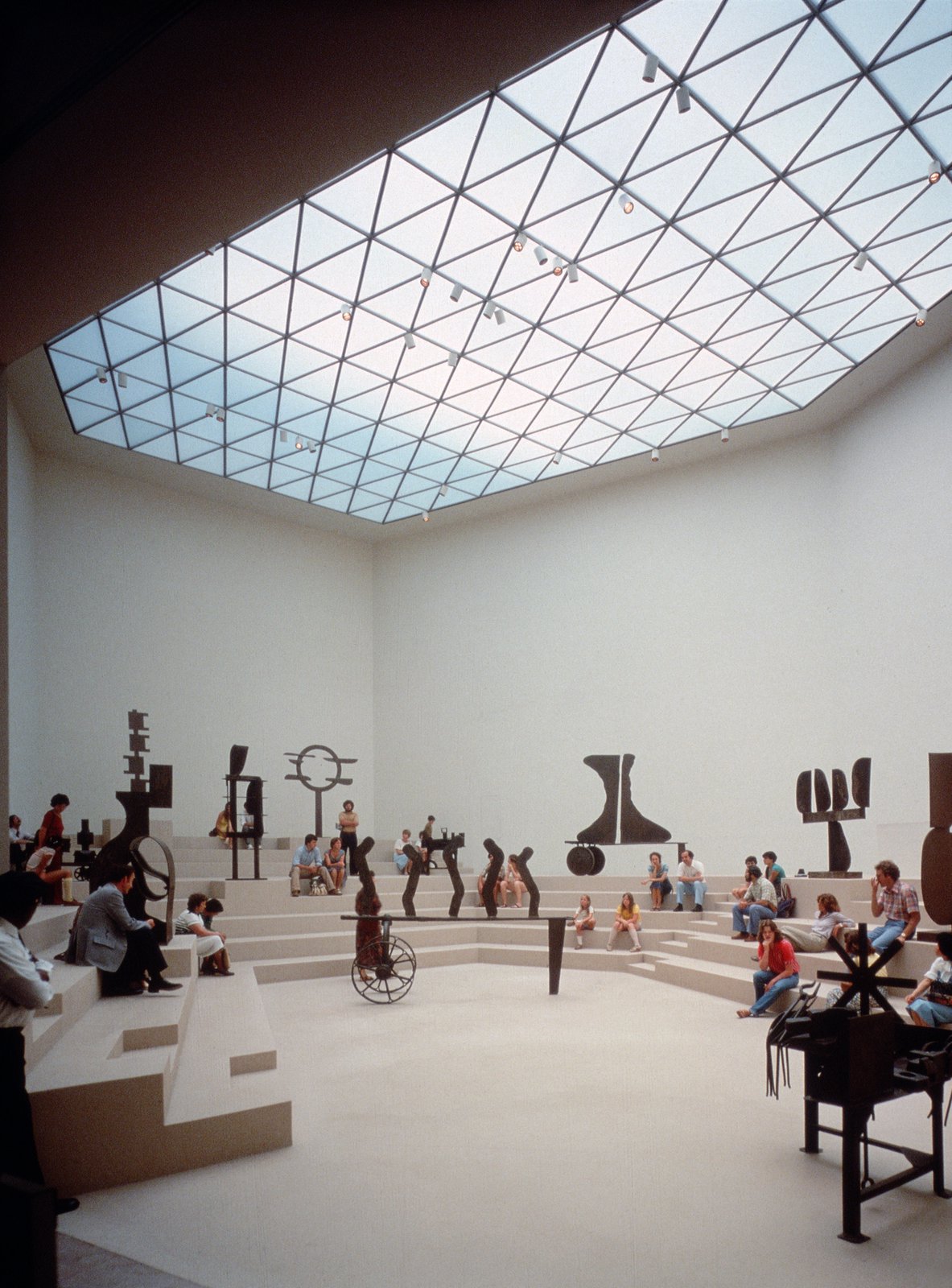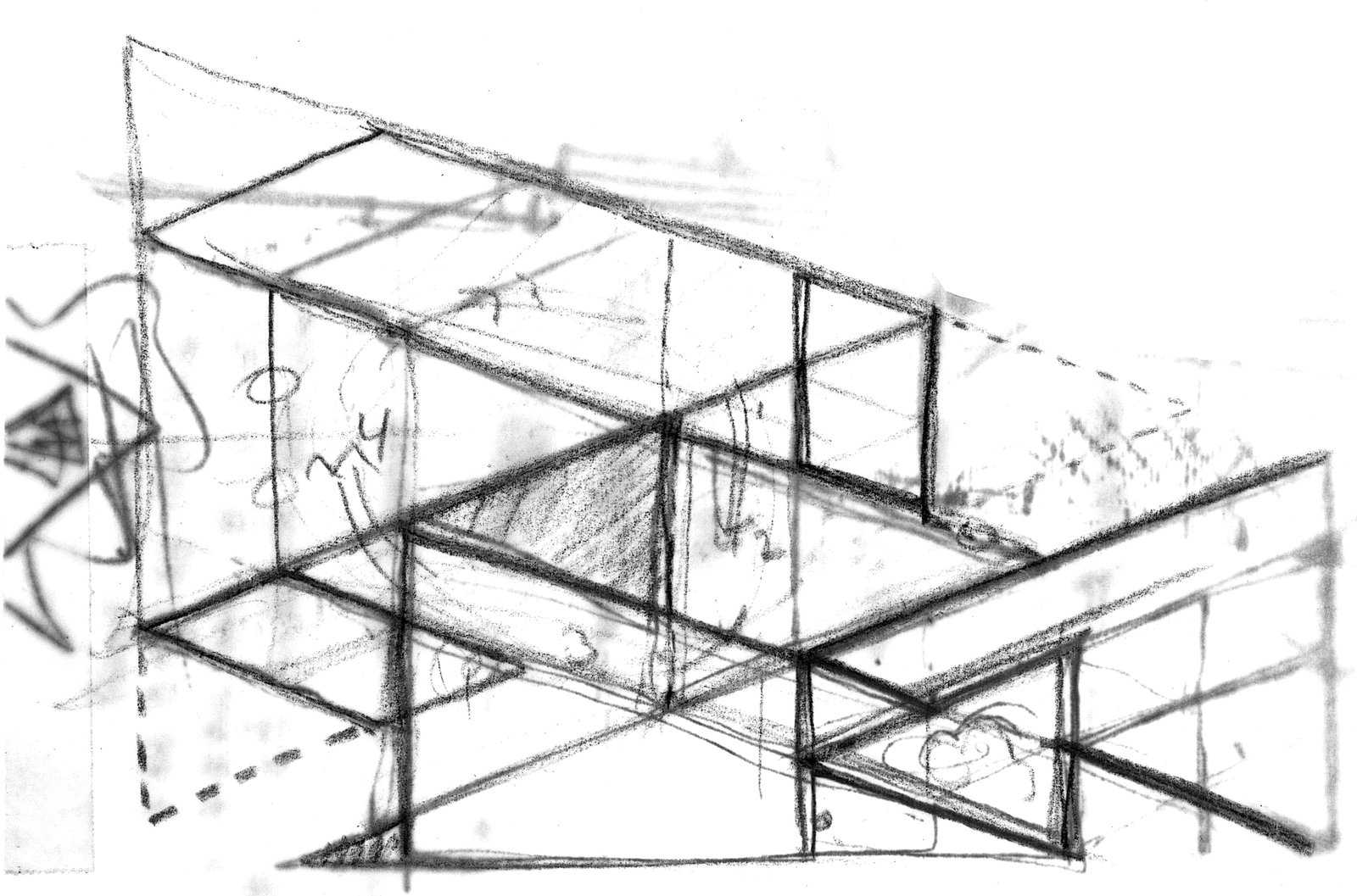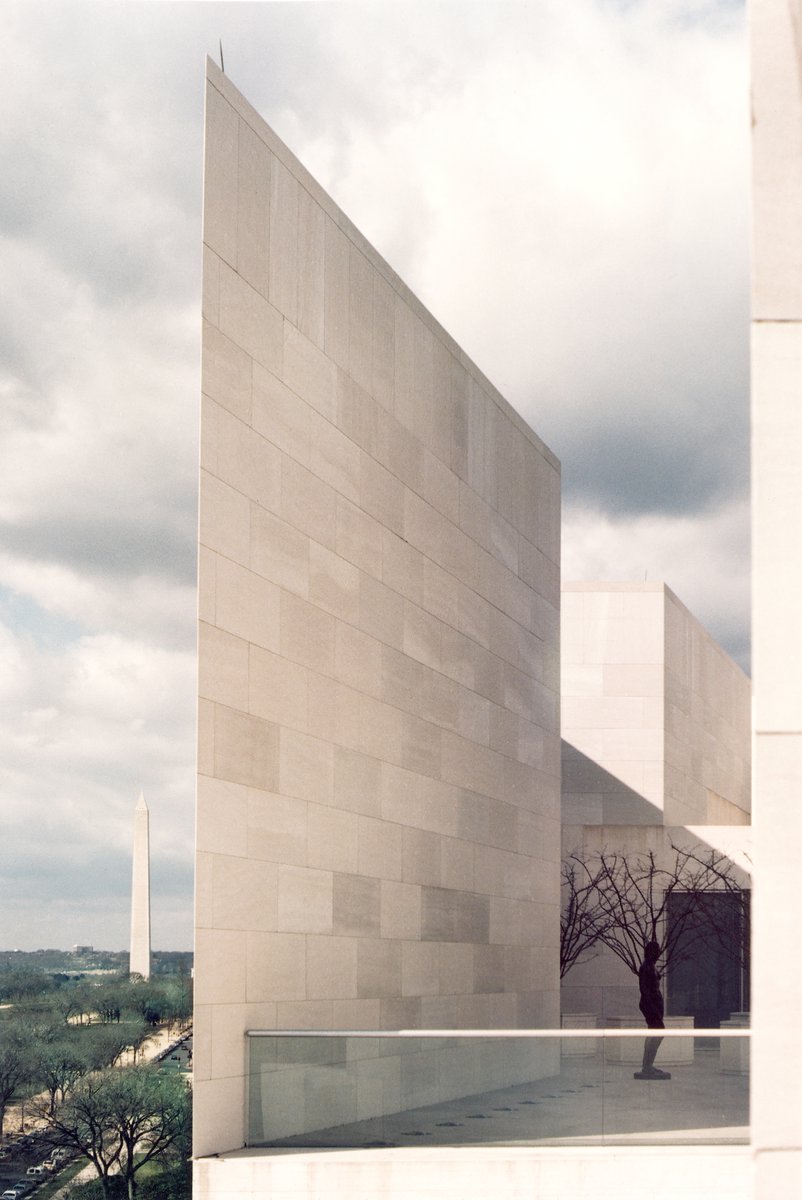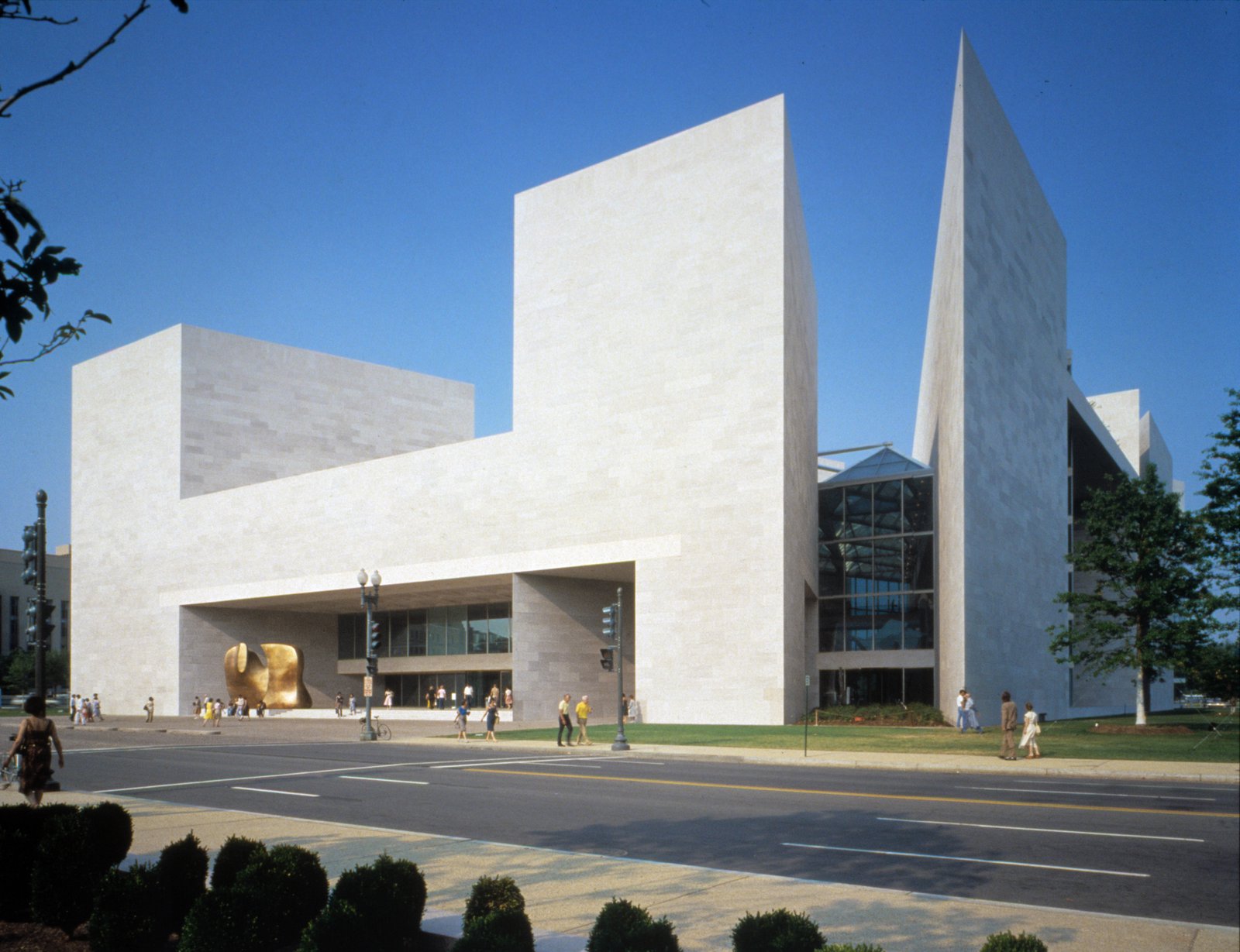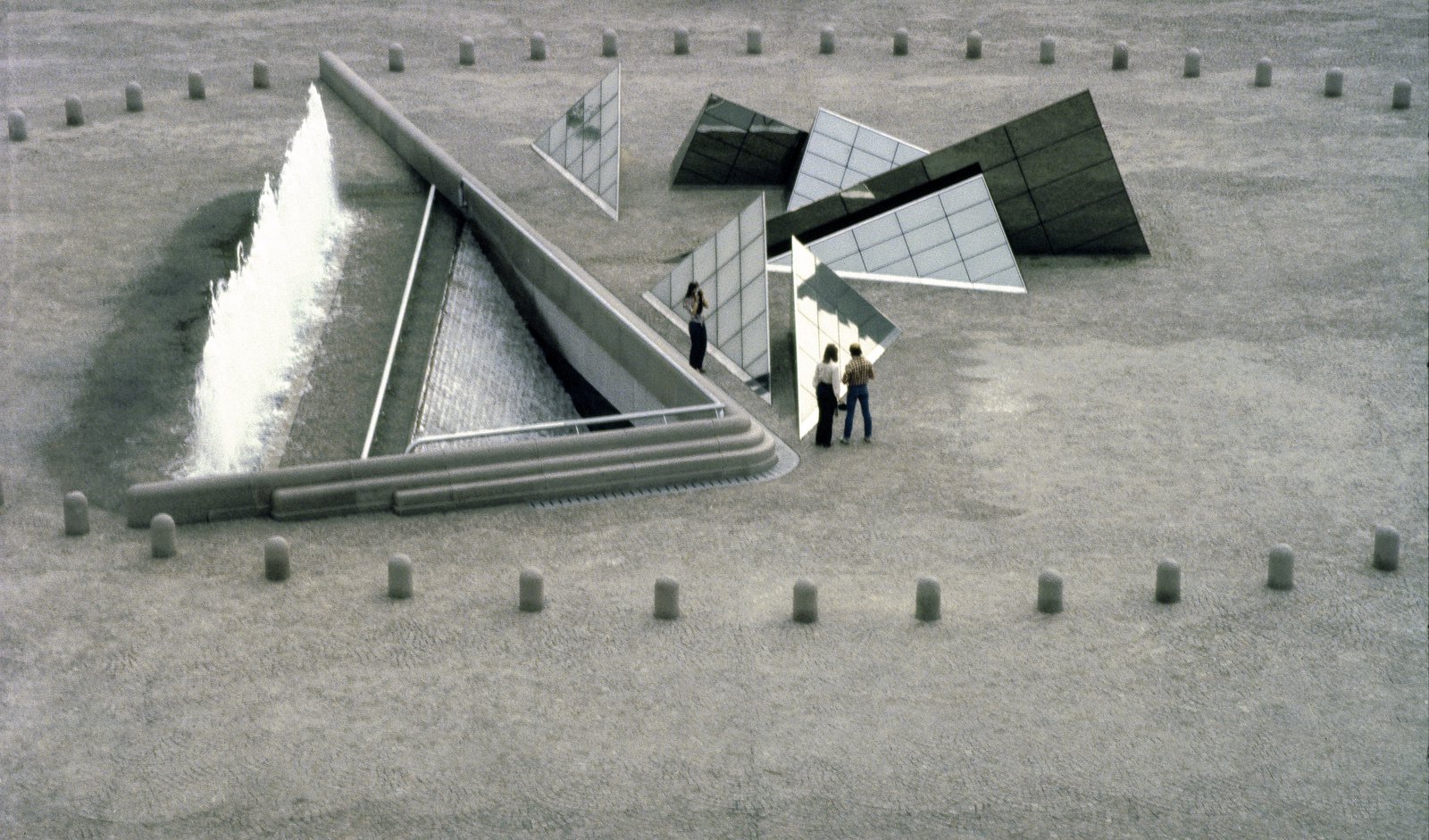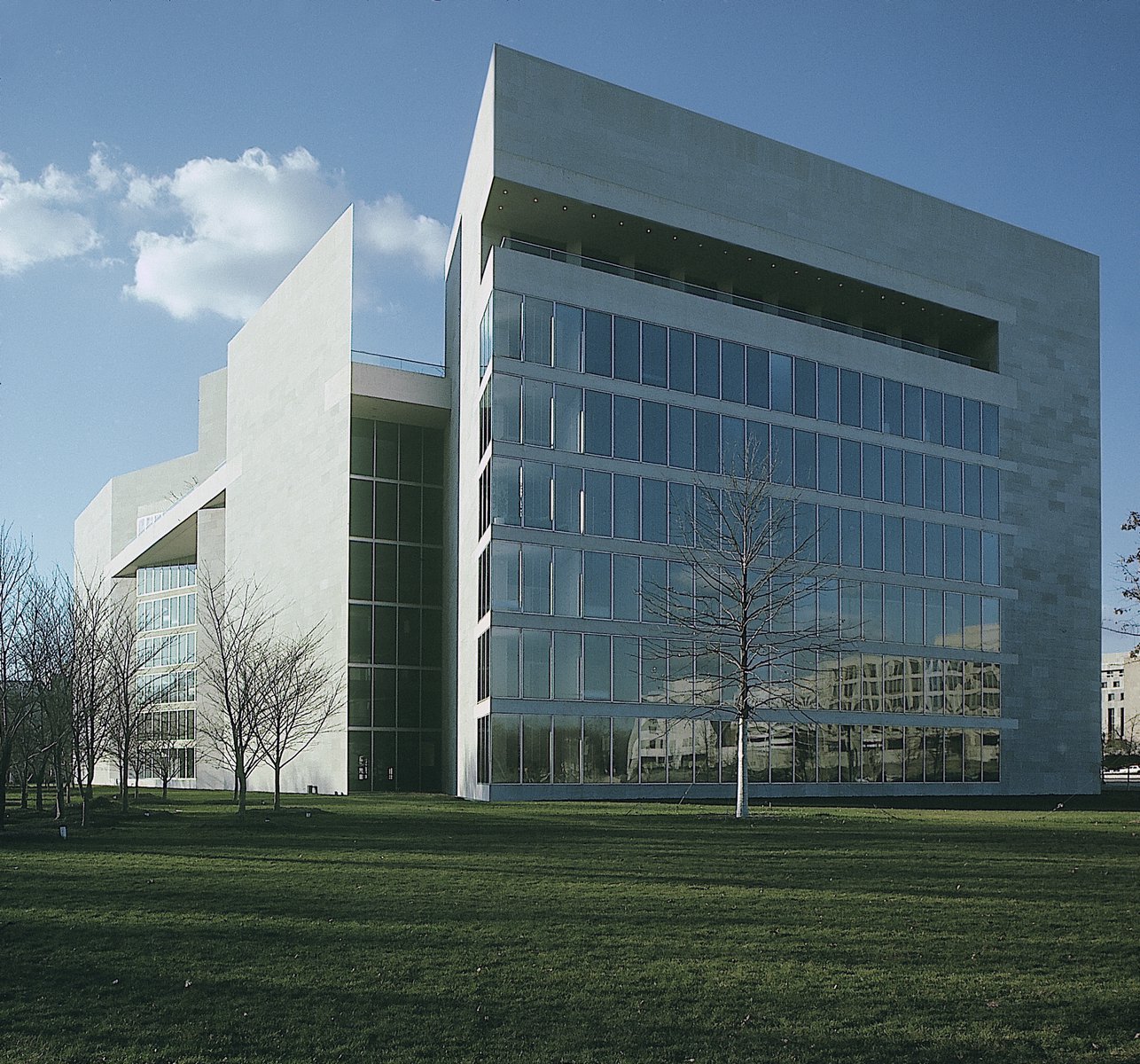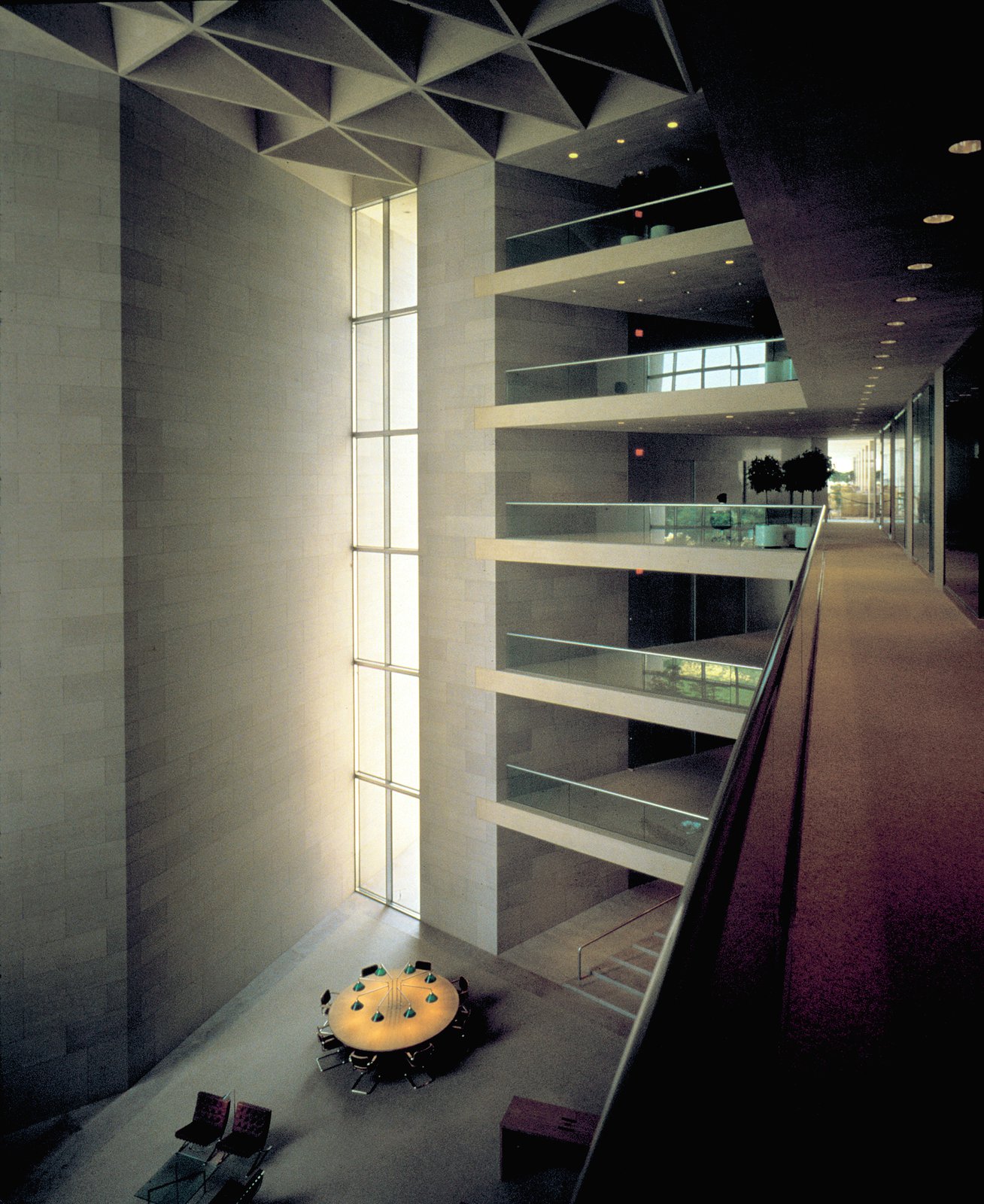National Gallery of Art, East Building
Situated on the Mall at the foot of the U.S. Capitol, the East Building occupies one of the most sensitive sites in the world.
In response to the need to fulfill two distinct functions—an expansion museum and a study center—the trapezoidal site is sliced into two triangular buildings joined by a central atrium. In plan, section, and elevation, the interlocking volumes merge inseparably in a spatial dialogue of rigorous geometry, technical innovation, and exacting craftsmanship. Three flexible towers are organized around a light-filled central atrium, providing space for exhibitions of different scales.
Show Facts
Site
8.8-acre trapezoidal site adjacent to the existing National Gallery at the intersection of Pennsylvania Avenue and the Washington Mall
Components
604,000 ft2 / 56,000 m2 gross area; skylit atrium; exhibition space; auditoria; varied dining; bookstore; technical support; Visual Arts Study Center with skylit reading room, library stacks, offices and support spaces, academic offices; subterranean link to existing museum; landscaped plaza with tetrahedral skylights and chadar waterwall; commissioned monumental art; renovations to original museum
Client
Trustees of the National Gallery of Art, Washington, D.C.
PCF&P Services
Master planning, architecture, exterior envelope, interior design
lead designers
I. M. Pei
Eason H. Leonard
Awards
One of America's Ten Best Buildings
American Institute of Architects: College of Fellows, 1986
Twenty-Five Year Award
American Institute of Architects, 2004
National Honor Award
American Institute of Architects, 1981
Annual Tucker Award
Building Stone Institute, 1979
The East Building mirrors the symmetry of its historic counterpart and continues its east-west axis. The new and old buildings are united into an integrated whole by an underground tunnel animated by prismatic skylights, a water wall, and a wide range of dining and other services.
The triangular geometry of the site provides a consistent motif throughout the building, influencing both the smallest details and the viewer’s perspective through space, particularly in the skylit atrium that serves as a hub of circulation and orientation.
Project Credits
Structural: Weiskopf & Pickworth, New York; Mechanical / Electrical: Syska & Hennessy, New York; Landscape: Office of Dan Kiley, Charlotte, VT; Marble: Malcom Rice, Concord, TN; Images: Ezra Stoller/Esto, Pei Cobb Freed & Partners, Robert Lautman, Courtesy of the National Building Museum, John Nicolais/Pei Cobb Freed & Partners, Allen Freeman

